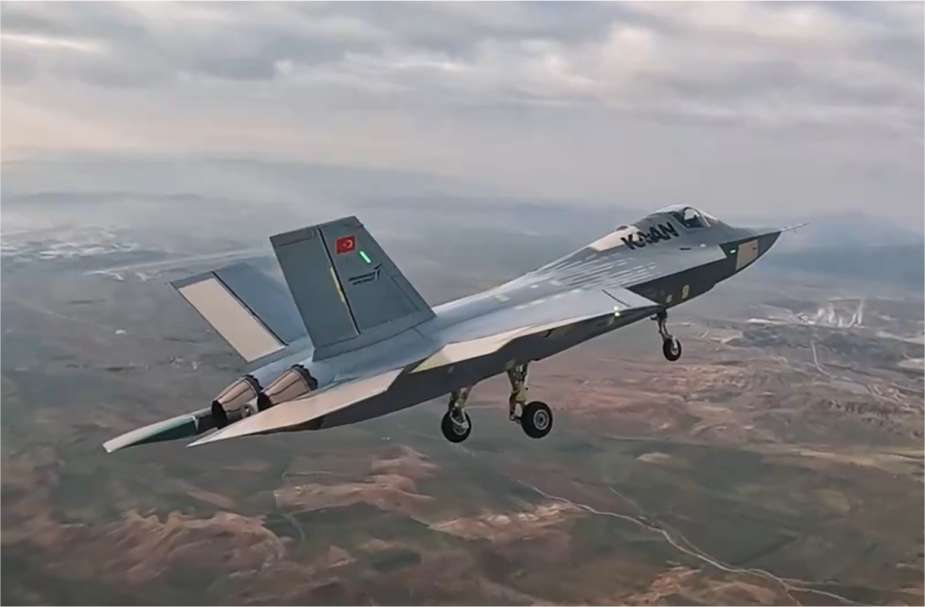On February 21, 2024, the maiden flight of Türkiye's next-generation fighter jet prototype, named KAAN, was completed. Orchestrated by Turkish Aerospace Industries (TAI), this event represents Türkiye's most significant technological advancement to date, aimed at bolstering its defense capabilities and reinforcing its strategic influence on the international stage.
Follow Air Recognition on Google News at this link
 Video footage of the first flight of the KAAN 5th generation fighter jet. (Picture source: Turkish MoD)
Video footage of the first flight of the KAAN 5th generation fighter jet. (Picture source: Turkish MoD)
In the early hours of Wednesday, the KAAN, flanked by a Turkish Air Force F-16D Fighting Falcon, undertook its inaugural flight. This fifth-generation aircraft, previously referred to as TF-X, is intended to replace the aging F-16 planes in the arsenal of the Turkish Air Force Command, with a phased implementation expected to begin in the 2030s. Initiated in 2016, the KAAN project demonstrates Türkiye's commitment to modernizing its defense infrastructure and maintaining readiness for future challenges.
The KAAN is an ambitious project led by Turkish Aerospace Industries (TAI) to develop a fifth-generation stealth fighter jet. Officially started in 2016 with funding of $1.18 billion to acquire the necessary technologies, the development of KAAN benefits from collaboration with international companies such as BAE Systems from the United Kingdom and Rolls-Royce for design and engine development. The choice of the EJ200 engine, which enables supercruise, reflects the ambition to equip KAAN with advanced operational capabilities, notably the ability to fly at supersonic speeds without afterburners.
With a wingspan of 14 meters, a length of 21 meters, and a height of 6 meters, KAAN is designed to achieve a maximum speed of Mach 1.8 and a service ceiling of 55,000 feet. The aircraft is also designed to be interoperable with other critical assets of the Turkish Air Force, including the F-35A, enhancing its operational efficiency in joint missions.
The objectives of the KAAN program are not limited to modernizing the Turkish aerial fleet; they also include strengthening the national defense industry through the development of indigenous engineering and production capabilities. The project aims to ensure that Türkiye owns the intellectual property rights to key technologies, particularly for the engine, which is crucial for the country's strategic autonomy. The involvement of international partners and a focus on local production reflect this ambition.
Lieutenant General İsmail Hakkı Pekin, former chief of Military Intelligence, shed light on the aircraft’s capabilities, indicating that the serial production of KAAN will extend over ten years. Once fully operational, the Turkish Air Force is expected to significantly enhance its regional air power, with KAAN playing a key role in its aerial fleet.
















